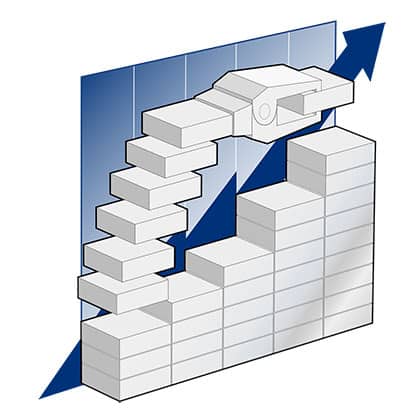Industry is facing new challenges: Production is changing due to ever shorter product life cycles, increased competition, individual products and smaller batches as well as more complex production processes. They demand increasingly flexible and agile production systems and staff.

Self-optimization: The Value Chain in the Industrial Internet of Things
The self-controlled value chain
At the same time, a consistently high standard of quality and productivity is required. The answer is a world in which machinery and the digital world merge into one. A world with smart value chains that organize and optimize themselves - within and between companies.
The value chain is faced with major structural changes triggered by both the challenges of the market and technical innovation. These result in completely new manufacturing processes characterized by networked, smart production technology and based on digitization, horizontal and vertical integration of companies, and the memory every workpiece will be equipped with in future. They facilitate data exchange within and between companies thus enabling virtually any business process to be outsourced - a fact that creates new value chains.
Value chains connected to the IIoT control, organize and optimize themselves. Their focus always is on cost optimization, availability, and the use of resources. This is made possible by three factors: networking of all systems involved in production, availability of real-time information on every workpiece and all resources, and the ability to determine the optimal value stream from this data. Decisions on production processes, manufacturing lines, and the control of resources are no longer made by staff members. The machines determine the optimal production process themselves. This results in production that autonomously organizes itself, does not require permanent human intervention, and yet facilitates human control.
The advantages are clear: Products, machinery, and logistics systems know their history, their current status, and alternate ways to complete their task. In the event of disruptions, they are able to decide whether a subsequent production step can be performed.